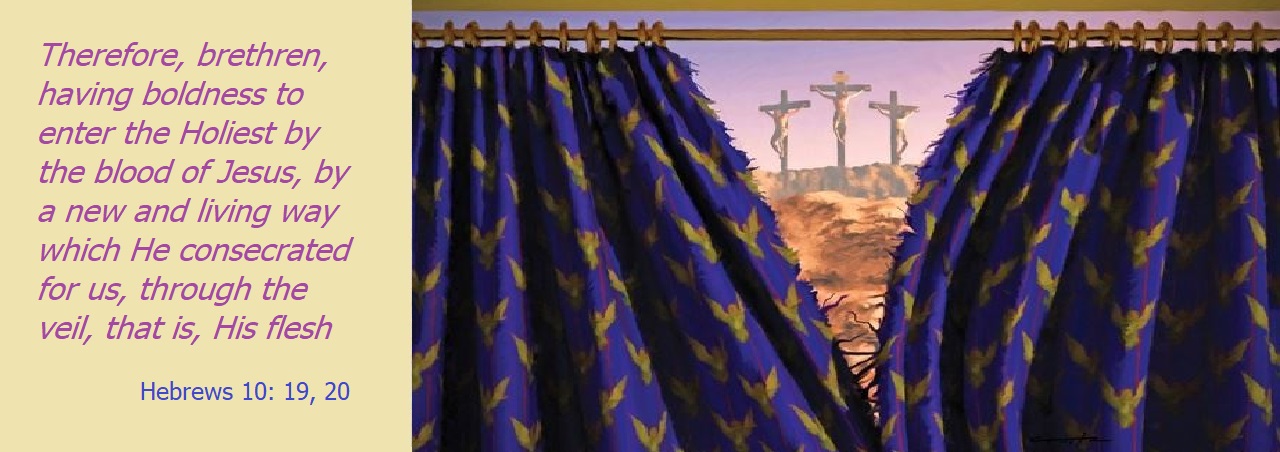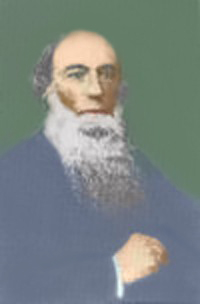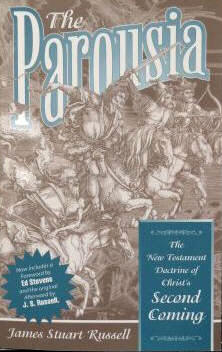
Biblical Evidence for the 1st Century Return of Christ
… parousiafulfilled.com
“But according to his promise WE are waiting for new heavens and a new earth in which righteousness dwells. Therefore, beloved, since YOU are waiting for these, be diligent to be found by him without spot or blemish, and at peace.” (2 Peter 3:13 & 14)
The awesome significance of Christ's parousia return (aka ‘Second Coming’) could only be expressed and described in powerful apocalyptic words and imagery, which are sometimes misunderstood as signifying the destruction of Earth and the physical universe. Futurists 1 often cite this passage as some sort of “proof” that Christ has not yet returned. James Stuart Russell 2 disabuses them of this misunderstanding by explaining the true meaning of this prophetic language:
Here are some quotes extracted from Russell’s book: “The Parousia”
First of all, the utterances of the prophets are poetry; and, secondly, they are Oriental poetry. They may be called hieroglyphic pictures representing historical events in highly metaphorical imagery. It is inevitable, therefore, that hyperbole, or that which to us appears such, should enter largely into the descriptions of the prophets. (The Parousia, p.350) …
In prophecy, as in poetry, the material is regarded as the type of the spiritual, the passions and emotions of humanity find expression in corresponding signs and symptoms in the inanimate creation. (op.cit. p.351) …
No one, however anxious to keep by the bare letter of the word, would think of insisting that such metaphors should be literally interpreted, or must have a literal fulfillment. The utmost that we are entitled to require is, that there should be such historical events specified as may worthily correspond with such phenomena; great moral and social movements capable of producing such emotions as these physical phenomena seem to imply. (ibid) …
[In relation to prophecies like Isaiah 13, 44 & 64, Russell notes:]
Have these predictions been fulfilled? We know they have been; … But no one will pretend to say that the symbols and figures which depicted their overthrow were literally verified. These emblems are the drapery of the picture, and are used simply to heighten the effect and to give vividness and grandeur to the scene. (op.cit. p.352) …
Similarly the prophets Micah, Nahum, Joel, and Habakkuk describe the presence and interposition of the Most High in the affairs of nations as accompanied by stupendous natural phenomena:
“Behold, the Lord cometh forth out of his place, and will come down, and tread upon the high places of the earth, and the mountains shall be molten under him, and the valleys shall be cleft as wax before the fire, and as the waters that are poured down a steep place.” (Micah 1:3,4 KJV)
“The Lord hath his way in the whirlwind and in the storm, and the clouds are the dust of his feet. He rebuketh the sea, and maketh it dry, and drieth up all the rivers. … The mountains quake at him, and the hills melt, and the earth is burned at his presence: yea, the world, and all that dwell therein. … His fury is poured out like fire, and the rocks are thrown down by him.” (Nahum 1:3 ‐ 6 KJV)
These examples may suffice to show, what indeed is self-evident, that in prophetic language the most sublime and terrible natural phenomena are employed TO REPRESENT NATIONAL AND SOCIAL CONVULSIONS AND REVOLUTIONS . Imagery, which if literally verified would involve the total dissolution of the fabric of the globe and the destruction of the material universe, really may mean NO MORE THAN the downfall of a dynasty, the capture of a city, or the overthrow of a nation. (op.cit. p.352) …
We will only quote in addition the excellent remarks of a judicious expositor --- Dr. John Brown of Edinburgh: ---
‘“Heaven and earth passing away,” understood literally, is the dissolution of the present system of the universe; and the period when that is to take place is called “the end of the world.” But a person at all familiar with the phraseology of the Old Testament scriptures knows that the dissolution of the Mosaic economy and the establishment of the Christian, is often spoken of as the removing of the old earth and heavens, and the creation of a new earth and new heavens. For example, “Behold, I create new heavens and a new earth, and the former shall not be remembered, nor come into mind.” “For as the new heavens and the new earth, which I will make, shall remain before me, saith the Lord, so shall your seed and your name remain” (Isa. lxv. 17; lxvi. 22 KJV). The period of the close of the one dispensation and the commencement of the other is spoken of as “the last days,” and “the end of the world,” and is described as such a shaking of the earth and heavens as should lead to the removal of the things which were shaken. (Hagg. ii. 6; Heb. xiv. 26, 27.)’ (op.cit. p.353)
It appears, then, that if Scripture be the best interpreter of Scripture, we have in the Old Testament a key to the interpretation of the prophecies in the New. The same symbolism is found in both, and the imagery of Isaiah, Ezekiel, and the other prophets helps us to understand the imagery of St. Matthew, St. Peter, and St. John. As the dissolution of the material world is not necessary to fulfillment of Old Testament prophecy, neither is it necessary to the accomplishment of the predictions of the New Testament. ... LITERAL FULFILLMENT of the symbols IS NOT ESSENTIAL to the verification of the prophecy, which is abundantly proved to be true by the recorded facts of history. (op.cit. p.354)
The extracts above are from: Note C - Appendix to Part II - “The Parousia” … see References. (emphasis added)
Many Futurists mistakenly predict a future global judgement and the destruction of Earth and the physical universe at the Parousia (‘Second Coming’) of Christ. Such doomsday predictions are largely based on a misunderstanding of figurative language and symbolism employed in passages like 2 Peter 3.
As Robert M. Bowman Jr 3 observes: “the Bible is a large collection of ancient books written in other languages by people living in other cultures.” We need to consider the original historical context and audience relevance. We need to understand what those passages meant to the original readers, more than 2,000 years ago.
Hebrew scriptures of the OT often used ‘apocalyptic’ language to describe devastating political and social and religious upheavals. Likewise, NT prophecies are couched in ‘apocalyptic’ hyperbole and figurative language, which is not intended to be taken literally. Hebrew symbolism and metaphors help to convey the awesome majesty and power of God, which finally fell upon the last wicked and perverse generation of Israel at the parousia.
As the pictured above, the veil of the temple was torn when Jesus was crucified: the Lamb of God who takes away the sin of the world. Now, through his shed blood, we have peace with God and can enter into the Holy of Holies. At the parousia, Christ returned in the power and glory of the Father, and utterly destroyed the OC temple and all its physical and religious elements. The shadows are now gone, replaced forever by the true eternal Kingdom of God: the ‘New Heavens’ and ‘New Earth’ in which righteousness dwells, through Christ.
▹
▹
NB: “Unless Otherwise indicated, all Scriptures are from the Holy Bible, English Standard Version, copyright © 2001, 2007, 2011, 2016 by Crossway Bibles, a division of Good News Publishers. Used by permission. All rights reserved.”
1… Futurist: These people claim that we are still living in the Last Days waiting for the Parousia, when Christ will return in judgement and resurrect the living and the dead and destroy the planet, etc. This viewpoint is generally held by Dispensationalism, Premillennialism, Postmillennialism and Amillennialism, with their own peculiar variations.

2… James Stuart Russell (1816‐1895) was a minister in the Congregational Church at Great Yarmouth, Tottenham, Edmonton, and Bayswater. He held to a past fulfillment of the Second Advent and in 1878 he published a book on this subject, entitled “The Parousia: The New Testament Doctrine of Our Lord’s Second Coming”.
Photo of J S Russell: author of “The Parousia”. Photograph, colorized by Virgil Vaduva
3… Recognizing Figurative Language in the Bible, by Bowman Jr, Robert M., viewed online 26 April 2019 at: http://bib.irr.org/recognizing‐figurative‐language‐in‐bible.

The Parousia: The New Testament Doctrine of Our Lord’s Second Coming by Russell, James Stuart, International Preterist Association, Bradford PA, 2003. (Originally published by T. Fisher Unwin, London, 1887).
Photo of cover: “The Parousia” by J S Russell (IPA, 2003).
copyright © 2019‐2023 Kenneth Higgs ‐ ParousiaFulfilled.com ‐ v2.01